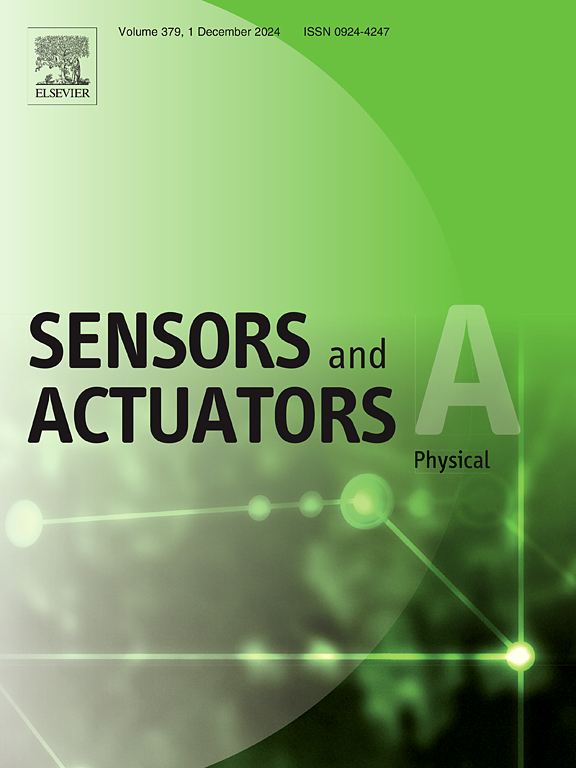基于由旋转扩散驱动的寡核苷酸功能化 Janus 粒子动力学的新型 RNA 传感器
IF 4.1
3区 工程技术
Q2 ENGINEERING, ELECTRICAL & ELECTRONIC
引用次数: 0
摘要
PCR 检测法用于诊断高危病毒和传染性细菌(包括新型冠状病毒)引起的感染。然而,目前的检测方法存在检测时间长、操作复杂等问题。在这项研究中,我们重点研究了微观变化的旋转布朗运动。通过在显微镜下拍摄寡核苷酸探针修饰的 Janus 粒子的旋转布朗运动,并分析其扩散率(即运动程度),我们开发出了一种特异、快速、简便的新型生物传感器,用于检测目标 DNA/RNA。斯托克斯-爱因斯坦-德贝关系表明,颗粒的旋转扩散率与颗粒大小的立方成反比。对于只在其一半表面上发射荧光的 Janus 粒子,旋转扩散率与相关时间相对应,相关时间即粒子旋转布朗运动所产生的闪烁信号在每段时间内的相关强度。在目标 RNA 存在的情况下,Janus 粒子捕获 RNA,形成 Janus 粒子-RNA 复合物,粒子体积增大,从而延长了相关时间。獐牙菜颗粒与目标 RNA 复合物的相关时间随着目标 RNA 浓度的增加而延长。本文章由计算机程序翻译,如有差异,请以英文原文为准。
A novel RNA sensor based on dynamics of oligonucleotide-functionalized Janus particles driven by rotational diffusion
PCR tests are used to diagnose infections caused by high-risk viruses and infectious bacteria, including novel coronaviruses. However, the current methods are problematic because of their long testing time and operational complexity. In this study, we focused on rotational Brownian motion that changes microscopically. We developed a new biosensor that is specific, quick, and facile for detecting target DNA/RNA by photographing the rotational Brownian motion of oligonucleotide probe-modified Janus particles under a microscope and analyzing the diffusivity, which is the degree of motion. The Stokes–Einstein–Debye relationship shows the rotational diffusivity of the particles is inversely proportional to the particle size cubed. For Janus particles, which emit fluorescence on only half of their surface, the rotational diffusivity corresponds to the correlation time, which is the correlation intensity per elapsed time of the flashing signal obtained from the rotational Brownian motion of the particles. In the presence of the target RNA, Janus particles captured the RNA, leading to the formation of Janus particle-RNA complexes and an increase in particle volume, which increased the correlation time. The correlation time of the Janus particle-target RNA complexes increased with increasing target RNA concentrations.
求助全文
通过发布文献求助,成功后即可免费获取论文全文。
去求助
来源期刊

Sensors and Actuators A-physical
工程技术-工程:电子与电气
CiteScore
8.10
自引率
6.50%
发文量
630
审稿时长
49 days
期刊介绍:
Sensors and Actuators A: Physical brings together multidisciplinary interests in one journal entirely devoted to disseminating information on all aspects of research and development of solid-state devices for transducing physical signals. Sensors and Actuators A: Physical regularly publishes original papers, letters to the Editors and from time to time invited review articles within the following device areas:
• Fundamentals and Physics, such as: classification of effects, physical effects, measurement theory, modelling of sensors, measurement standards, measurement errors, units and constants, time and frequency measurement. Modeling papers should bring new modeling techniques to the field and be supported by experimental results.
• Materials and their Processing, such as: piezoelectric materials, polymers, metal oxides, III-V and II-VI semiconductors, thick and thin films, optical glass fibres, amorphous, polycrystalline and monocrystalline silicon.
• Optoelectronic sensors, such as: photovoltaic diodes, photoconductors, photodiodes, phototransistors, positron-sensitive photodetectors, optoisolators, photodiode arrays, charge-coupled devices, light-emitting diodes, injection lasers and liquid-crystal displays.
• Mechanical sensors, such as: metallic, thin-film and semiconductor strain gauges, diffused silicon pressure sensors, silicon accelerometers, solid-state displacement transducers, piezo junction devices, piezoelectric field-effect transducers (PiFETs), tunnel-diode strain sensors, surface acoustic wave devices, silicon micromechanical switches, solid-state flow meters and electronic flow controllers.
Etc...
 求助内容:
求助内容: 应助结果提醒方式:
应助结果提醒方式:


